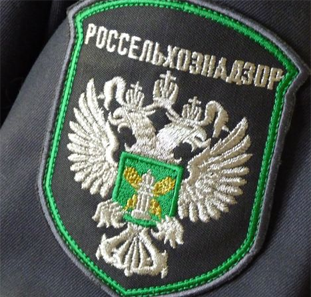Unliquidated landfills on agricultural land lead to the risk of the spread of avian influenza

Unexploited garbage accumulations become a permanent habitat or stopovers on the migration route of a large number of gulls, spreading highly pathogenic avian influenza (HPAI) among wild and domestic individuals.
Avian influenza in gulls is severe, leading to death. In May 2023, a sharp increase in the death of birds of the gull family (Laridae) from HPAI was recorded. So, in the first 2 weeks of the month, 22 outbreaks caused by the H5N1 subtype virus were registered (confirmed by the examinations of the Federal Center for Animal HEALTH), in Kirovskaya (9), Smolenskaya (2), Kaluga (1), Kaliningradskaya (1), Tverskaya (1) regions, the republics of Mari El (4) and Udmurtia (4).
The largest number of dead birds was recorded in the Kirov region on the territory of several municipal districts at once - almost 4 thousand heads. Almost 900 gulls perished in the Republic of Mari El during this period. 140 seagulls died in Maloyaroslavets, Kaluga region.
One of the main sources of food for seagulls living far from water bodies are landfills and landfills.
Since 2017, ROSSELKHOZNADZOR has identified more than 10 thousand landfills on agricultural land with a total area of 9.8 thousand hectares, which is almost comparable to the total area of the capital of the Republic of Karelia, Petrozavodsk.
At the same time, as established, only 70% of the total amount was liquidated during this period. Such rates of landfill cleaning in many regions of RUSSIA cannot be considered satisfactory. For example, in 2022, out of 2.3 thousand landfills, only 1.1 thousand were eliminated, that is, less than half. In the first quarter of 2023, only 25 were removed, while 258 landfills were discovered.
In connection with the danger posed to veterinary well-being by unremoved and newly emerging landfills, Rosselkhoznadzor instructed its territorial departments to intensify work to identify places of illegal waste storage. The agency also calls on the executive authorities of the constituent entities of the Russian Federation to immediately begin the elimination of all landfills on agricultural land in the areas of responsibility.
For reference:
On the territory of Russia you can meet more than 20 species of birds that belong to the gull family. Their habitat is quite wide: this includes the European part of the country, most of the Far East and Siberia. Most of the gulls winter in the Black or Caspian Seas, some fly to the North Sea or the Mediterranean, as well as to the countries of Europe, Africa and Asia, including those endemic for highly pathogenic avian influenza.
8 main migration routes pass through Russia, and most of the wild birds, which are potential carriers of the virus, arrive in Russia during the spring migration to nesting sites, creating a risk of introducing influenza and spreading it to poultry.
Identification and determination of the list of infected bird populations is currently the key to the effectiveness of anti-epizootic measures.
Read together with it:
- США ввели санкции против президента КолумбииПрезидент Колумбии, его жена и старший сын, а также глава колумбийского МВД попали под санкции США из-за трафика наркотиков из Колумбии в Штаты. Бессент обвинил Петро в отказе пресечь деятельность наркокартелей Густаво Петро Минфин США ввел санкции против президента Колумбии Густаво Петро, сообщается на сайте ведомства. «Президент Петро позволил наркокартелям процветать и отказался пресечь их деят...
- Чего ожидать от «одной из самых рискованных» поездок ТрампаДональд Трамп начал турне по Азии, в ходе которого встретится с лидерами ключевых стран, включая Си Цзиньпина. Почему эта поездка может оказаться сложнее, чем недавние визиты в Европу и на Ближний Восток — в статье РБК Дональд Трамп Какие встречи запланированы в ходе турне Президент США Дональд Трамп вылетел из Вашингтона поздним вечером в пятницу, 24 октября, и утром в субботу его борт приземлитс...
- Indonesia: New rules to protect farm animalsKey Provisions of the New Regulation The new draft law , currently being reviewed, sets ambitious goals. it will cover all categories of animals—from farm animals to pets, service animals, and laboratory animals. The primary focus is on implementing a certification system for farmers who are committed to more humane and sustainable farming practices. This will not only improve animal welfare but a...
- The EU imposed sanctions against Medvedev's aide and the HSE rector.The sanctions include AvtoVAZ CEO Maxim Sokolov, Medvedev aide Oleg Osipov, HSE Rector Nikita Anisimov, three children's ombudsmen, a North Korean general, and others. In total, the EU has added 21 individuals to the sanctions list .As part of its latest sanctions package, the European Union imposed restrictive measures against individuals, including AvtoVAZ CEO Maxim Sokolov, Assistant to Deputy ...
- Chile resumes importing meat and livestock from PatagoniaThe resolution, eagerly awaited by the livestock sector, lifts the suspension of imports of Patagonian livestock products, which was imposed at the end of July. This was announced following the completion of a technical audit conducted in Argentina by Chile's Agricultural and Livestock Service (SAG). Chile took corrective measures after the Argentine government amended its sanitary regulations, pa...
- Rosselkhoznadzor conducted six inspections of livestock farms using UAVs in the Rostov and Volgograd regions and Kalmykia.All inspections were conducted using unmanned aerial vehicles. During these activities, 12 violations of mandatory requirements by agricultural enterprises were identified. The main violations included the lack of fences on the premises, unorganized areas for disinfecting vehicles, the absence of sanitary checkpoints, unmarked animals, and improper storage of manure. Six warnings were issued to th...
- A new approach to monitoring: Rosselkhoznadzor uses drones to inspect livestock farms in Transbaikalia.During a series of on-site surveys conducted on October 8 and 15, 2025, in the Karymsky and Chita districts, serious violations of veterinary legislation were recorded. Among the issues identified were the unauthorized storage of manure, the lack of disinfectant barriers at entrances, and inadequate fencing of areas. Processing the collected data will enable the necessary measures to be taken in a...
- A Moscow region restaurant has been issued a warning for operating without registration in the Mercury system.Due to violations identified in accordance with the EAEU technical regulations and Russian legislation on veterinary and food safety, on October 14, individual entrepreneur A.I. Konkin was issued a warning regarding non-compliance with mandatory requirements. Since the beginning of 2025, ROSSELKHOZNADZOR has identified 2,......
- In the Nizhny Novgorod region, 34 declarations for dairy and meat products were cancelled due to violations.According to the agency's press service, 27 declarations concerned dairy products, and 7 concerned MEAT products. The main reason for the recalls was product non-compliance with mandatory requirements established by the technical regulations of the Customs Union, which was recorded in 67% of cases. In 33% of cases, declarations were cancelled due to inaccurate declarations of dairy products. it wa...





























































